Corporate Headquarters
475 Metro place South, Suite 120, Dublin, OH 43017, USA,
Direct: +1 614-707-5225
Global Technology Center
SKCL Infinite Towers, A21 & A22, Thiru-vi-ka Ind. Estate, Guindy, Chennai-600032, India,
Direct: +91 (44)-2250-1363
Virtual Reality
for Students and Families
Virtual Reality (VR) enhances student learning with immersive 3D graphics, visuals, and virtual interaction, supporting multi-modal learning and increasing engagement, resulting in better retention of subject matter.
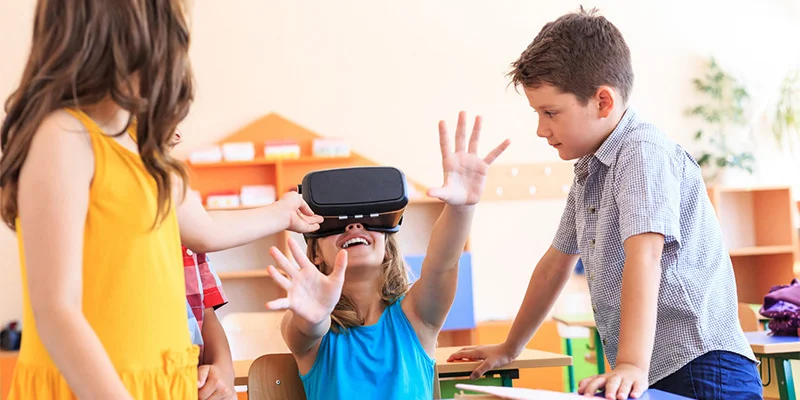
Why Use Virtual Reality (VR) by Students and Families
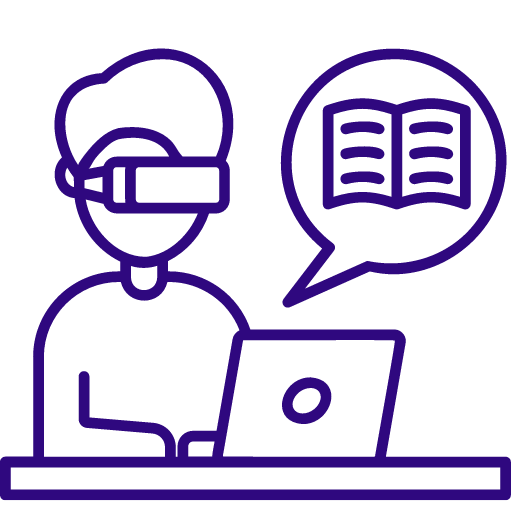
Accessible Education
VR technology promotes inclusivity by providing accessible learning experiences for students with diverse learning needs, disabilities, or geographical constraints, ensuring equitable access to quality education.
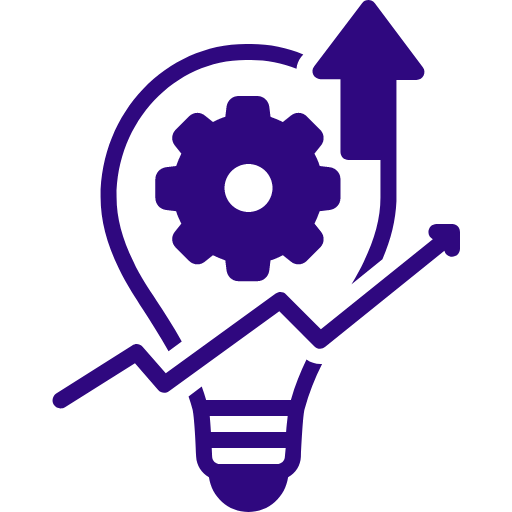
Enhanced Learning Experience
VR offers immersive 3D environments and interactive simulations that engage students in active learning, making complex concepts easier to understand and retain.
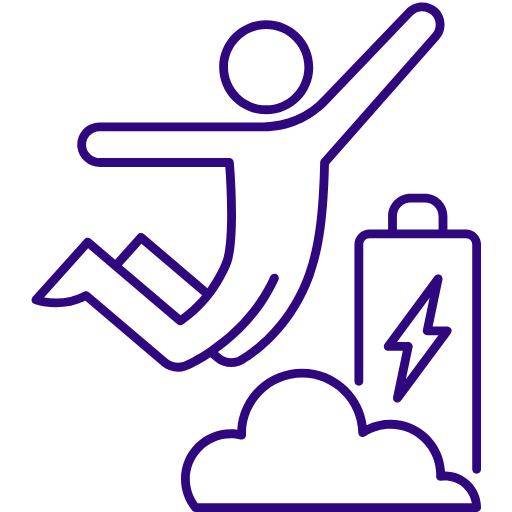
Increased Engagement
VR captivates students' attention with interactive content and gamified learning experiences, motivating them to explore, experiment, and actively participate in their learning journey.
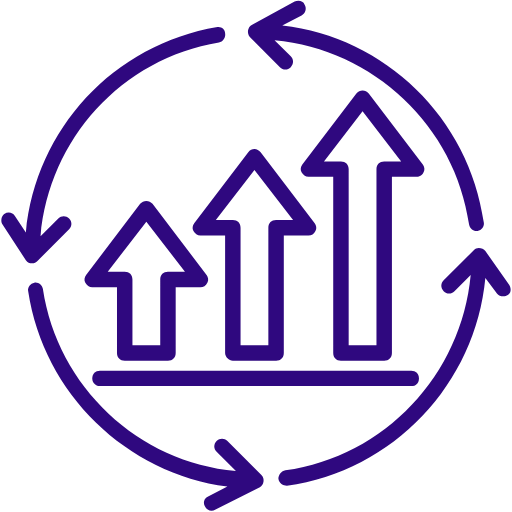
Improved Retention
The immersive nature of VR experiences enhances memory retention by providing multisensory stimuli and reinforcing learning through hands-on interactions.
Use Cases
Explore Examples of VR Students and Families Solutions
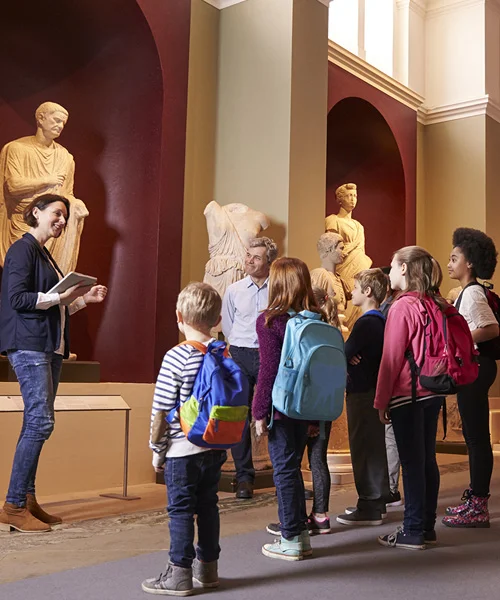
Field Trips
Virtual Reality (VR) field trips are becoming so popular in education because, in addition to providing immersive and engaging experiences, they’re also accessible. Not every student may be able to join their classmates for a real-world trip to a museum or another country, whether because of a disability or expense. With VR, every student can go on the same trip at no cost.
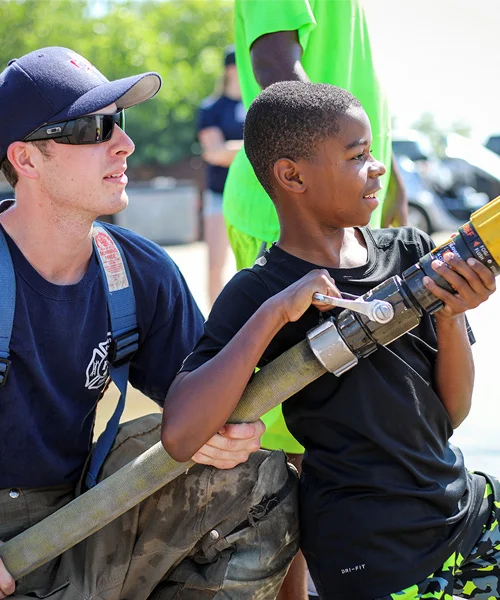
Prepare Students for Future Careers
Using VR, students can explore new career prospects. VR simulations can mirror real-life scenarios, allowing users to learn how to perform specific tasks in a low-risk environment. There already exists a wide range of VR simulations, ranging from recreations of specific medical procedures to virtual football training. Without the potential for causing harm to oneself or others, an individual can learn the ropes without fear of consequence. This is especially important for STEM careers, where the country faces a considerable skills gap.
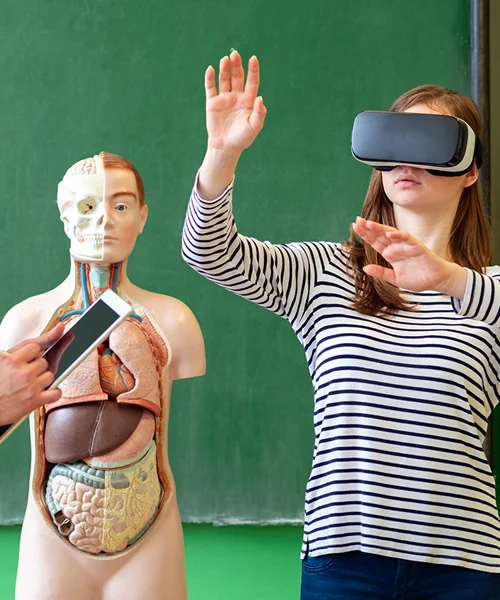
Studying Intricate Systems
Augmented Reality (AR) and Virtual Reality (VR) can be used to look closely at intricate systems taught in school. For instance, med students use an AR app to interact with more than 17,000 body structures in 3D graphics. This allows students to better understand body anatomy by interacting with the different body structures and learning the functions of every muscle.
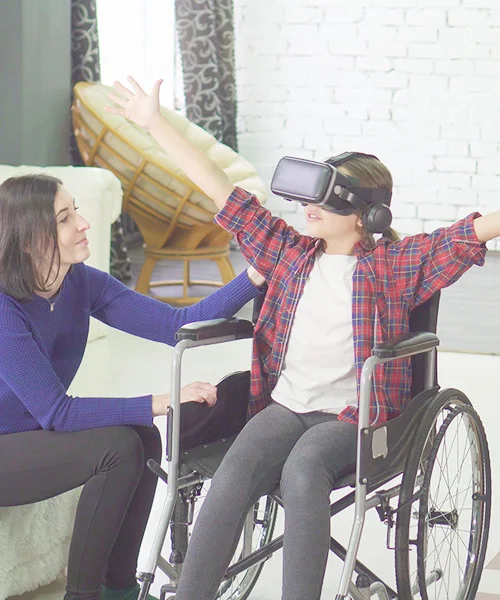
Assist Students With Disabilities
Virtual Reality (VR) can serve as an assistive technology for students with learning disabilities due to its potential to minimize the effects of a disability and offer another means to accomplish tasks. Virtual Reality technology, such as Virtual Reality, is a tool for inclusion; the collaborative components of VR can help students with disabilities. Learners who may ordinarily be isolated from peers can interact with them virtually. This social interaction can result in improved self-esteem and educational outcomes.
Frequently Asked Questions
How Augmented reality can be used in a classroom?
There are several ways to use augmented reality in the classroom, here are a few examples. Augmented reality helps teachers explain complex concepts easier by offering visual representations of the subject matter, and utilizing AR-powered worksheets and textbooks is an excellent way to encourage students to explore specific aspects of a subject in more detail. Also, incorporating augmented reality in the classroom facilitates a practical way of learning and offers a safe learning environment for students can practice, make mistakes, and learn from those mistakes without fear of causing harm.
How can Augmented reality be used in education?
Augmented reality is a very useful tool for education. It introduces gamified elements and creates a fun, interactive, and engaging learning experience, which helps students remain engaged with the learning experience. For teachers it provides them the opportunity to teach using immersive visuals and 3D graphics to help their students understand complex concepts.
How do you use Augmented reality in online classes?
There are still challenges with online classes and distance learning, such as infective time management, lack of motivation in students, and the lack of engagement with teachers and fellow students. Thus, Augmented reality can help address these issues. As AR can improve online classes by bringing in 3D graphics and interactive elements into the online classroom such as, interactive e-books, interactive slideshows, and virtual field trips. Using elements like these examples can help make the online learning experience engaging and interactive.
How does AR work for students?
Augmented reality makes education more fun, interactive, and engaging for students. It brings them closer to reality with interactive 3D models and engaging gamified content, which makes learning interactive and appealing to kids. As AR presents interactive visual elements, it becomes easier for students to process information and understand concepts. Also, tech-based learning, such as AR, can stimulate students' creativity and inspire them to explore more complex concepts.
How to use Virtual reality in distance learning?
Distance learning can be dull and lack interactive elements to keep learners engaged. For that reason, virtual reality can help teachers and students collaborate with digital avatars, improve students retention, and provide an exciting classroom experience. These elements of virtual reality will help keep students engaged and help students learn by doing rather than listening or reading.
What are Augmented reality apps for education?
App developers have been producing many AR apps for education that help improve classroom learning through increased engagement and interactivity. These Augmented Reality apps allow students to expand their knowledge and also engage them in the process of developing projects using AR. Additionally, they enable educators to build their own AR content and lesson plans. We may be a bit bias, but we believe we have one of the best AR apps for education in VR Guru!
What does Augmented reality replace in classroom?
AR technology is growing rapidly and may someday replace all forms of printed study material such as expensive textbooks and worksheets. For that reason, schools and universities budget will increase as they will no longer have to spend money on those items. Also, AR will be adding more things than taking things away. As AR will enhance the learning experience through 3D graphical elements and make learning more accessible.
What is Augmented reality for students?
Augmented reality is a technology that brings computer-generated graphics to life in the real world. Therefore, AR for students provides them with the opportunity to learn from anywhere and understand complex concepts through digital components and a hands-on learning style.
What is the impact of AR on educational learning rather than games?
Many associate AR with gaming like Pokémon; however, augmented reality is not limited to the gaming industry. AR is making contributions in many different industries, including education. As AR provides an interactive learning environment and the opportunity to implement a practical learning approach that helps students improve their level of understanding in less time.
What skills are needed for Augmented reality?
One benefit of augmented reality is it does not require any specialized skills or hardware equipment. AR is mobile-friendly, and most smartphones and tablets meet the requirements to effectively run AR applications. Therefore, if you can use a smartphone or tablet, you can use AR.
Is AR good for students?
The short answer is Yes. AR can significantly boost student engagement by adding an interactive visual aspect to classes. Since AR is very interactive, it helps students' interest and motivates them to actively participate in classroom activities.
What is AR in the classroom?
AR in the classroom helps teachers explain complex topics easier by offering a visual representation of the subject matter. Teaching with visual elements helps students better comprehend information. For example, instead of reading about nuclear reactions from textbooks, students can look at 3D AR projections and visualize the concepts to better understand. Using AR-enabled textbooks in the classroom can transform the study materials and help students explore specific aspects of a subject in more detail. AR-enabled books bring text to life by presenting information in a 3D visual format and enhancing understanding.
How AR can help education?
Adopting AR in education can improve the way students interact with the subject material during the learning experience. An interactive learning environment presents an opportunity to implement a hands-on, practical learning approach that helps students improve their level of understanding in less time. With AR, students can improve memory retention by learning through interactive, visual 3D models and carrying out practical exercises rather than reading information from a textbook. In addition, AR can significantly boost student engagement by adding an interactive, visual aspect to classes.
How does AR help students?
Augmented reality helps students process information and understand complex concepts easier and quicker than the traditional learning methods. With augmented reality students are participating in the learning process, and are more willingly to learn and practice new skills. Therefore, AR is helping students learn more efficiently.
How does Augmented reality affect our privacy and social life?
Augmented reality can help improve student's social interactions and communication with classmates. However, there are a few concerns teachers and parents need to consider prior to adopting AR. To provide an immersive experience, AR collects extensive biometric data of the users. While this is essential to provide a better experience, it does present a privacy issue. In addition, while immersive technology can drastically improve the learning experience, there is also the risk of health concerns such as social isolation. Therefore, it is important for teachers and parents to moderate and supervise the usage of AR.
How does Augmented reality affect people's behavior?
Immersive technology can drastically improve the learning experience, by helping students learn quicker and retain information longer. However, there is also the risk of changes in behavior such as self- isolation and interaction with others. Therefore, it is important for teachers and parents moderate and supervise the usage of AR.
How does Augmented reality work for kids?
Augmented reality can inspire kids to be creative and learn new skills. Kids can use augmented reality on almost any smart device, and play interactive games or activities that can give children realistic experiences. Not to mention learning begins at home and with the help of AR kids can begin learning using apps to help your child learn new skills and make learning fun.
Is Augmented reality safe for kids?
Augmented reality is safe for kids as many children use augmented reality for education to improve their learning experience. Also kids use it for entertainment purposes as well to play various of games like Pokoemon. However, it is important for teachers and parents to be aware of excessive screen time as kids who receive excess screen time can experience nausea, dizziness, and eye-problems.
Is Augmented reality the future of education?
Advances in technology has changed education significantly and has redefined how teachers teach and students learn. Classroom lessons have shifted from textbooks and blackboards to smartphones and smartboards, allowing learners to interact and attend lectures through their PCs and smartphones. AR tools provide teachers with multiple ways of ensuring learning is active, and learners are engaged. Therefore, augmented reality will continue to change and advance education overtime.
What are the benefits and risks of Augmented reality?
Augmented reality, like everything else comes with benefits and risks associated with it. Thus, some benefits are that augmented reality provides kids with the opportunity to increase their creativity, helps kids practice their newly acquired skills and knowledge right away, and can increase social interaction and collaboration. Some risks are negative effects on physical health like eyestrain, addiction to the technology, and isolation. However, all these risks can be avoided with using AR technology in moderation.
What are the negative effects of Augmented reality?
AR has immense potential as it offers new and exciting ways for learners to interact and engage. However, there are a few concerns to consider and evaluate prior to adopting AR. To provide an immersive experience, AR collects extensive biometric data of the users, that is essential to provide a better experience. However, it does present a privacy issue. There is also the risk of addiction, poor posture, sweating, nausea, and not being comfortable operating technology or troubleshooting a problem can be a real concern.
How is VR used in education?
Virtual reality is used in education to help make learning fun and engaging for students. Many schools and teachers use virtual reality for virtual field trips to allow the students to experience things like space or the Eiffel Tower that are too expensive or dangerous to go see in real-life.
How is VR used in the classroom?
Using VR in classrooms offers interactive visual elements such as images, graphics, and videos to help students learn faster and retain information for a prolonged period. Also VR enables students to go on virtual 'adventures,' immerse themselves, and thoroughly explore the subject matter. By utilizing immersive technologies like VR, teachers can keep students engaged throughout the lesson.
Why VR is the perfect education tool?
VR is one of the best tools for education because it provides students the opportunity to learn through experiences and by “doing” rather than listening to lectures and reading textbooks. As learning by ‘doing’ helps sparks students’ imagination and encourages creative thinking as students are “transported” out of the classroom when using VR to learn.
How much does VR cost for education?
VR is more affordable now than ever before. Costs depend on a variety of factors such as instructional design, creation, management, the production of customized content, and number of developers and headsets required. The cheapest VR headset on the market is the google cardboard headset starting off at $15! Thus, the price range for VR headsets are anywhere from $15-1,000. With VR, you do need content. There are commercially available packages on the market today offering high quality VR content at reasonable prices. These packages are usually priced based on a sliding scale, the more licenses purchased, the lower the cost per license. Therefore, it is up to institutions to decide what combination of equipment and content works best for their needs.
How do you use VR in the classroom?
Many institutions are adopting VR into the classroom to make the learning and teaching experience more engaging and active. For many institutions, VR has boosted students’ engagement and has made learning a fun experience with virtual field trips and bringing complex subjects to life such as math and science.
What schools use VR?
As of 2018, 18% of K-12 educational institutions in the US who responded to a survey have implemented virtual reality into the curriculum. While 46% of colleges in the US implemented VR into their curriculum as well. Some of the schools using VR include the School of Art institute of Chicago, University of Dayton, and Dallas hybrid prep.
Is VR okay for 13 year olds?
Yes. Several manufacturers (i.e., Sony and Samsung) warn that children under 13 should not use VR headsets because of the nature of some VR content and because the size of the headset is not intended for children. However, a study published in 2020 found that young children tolerate “fully immersive” VR games without “noteworthy effects” on the coordination between visual perception and physical movement. Likewise, a study published in 2017 showed no serious deterioration of vision among children 8 to 12 who played a VR video game for 20 minutes. But two study participants did run into trouble detecting differences in distance.
What are the benefits of VR?
There are several benefits of VR. Here are some examples. VR presents a practical learning and teaching method and presents a safe space to practice. Also, the gamified experience presents students with an opportunity to try new things, fail, and learn from their mistakes without real consequences.
What is the impact of VR on education learning rather than games?
VR has made a positive impact on educational learning as it has made the learning experience more interactive and engaging experience. Also, it has provided students with a better sense of place when it comes to learning about World War II or the Great depression as students can use VR to see it and experience it as if they were physically there.
Who uses VR?
Many organizations in several industries use VR for various purposes. For example, educational institutions use VR to help keep students engaged and create a fun learning environment. In addition, businesses in retail, automotive, and healthcare are using VR to provide a safe and cost-effective training environment and to improve product prototyping by using VR to detect design problems. Also people still use VR today for gaming purposes as well.
What are the 4 elements of Virtual reality?
Virtual reality consists of 4 elements: virtual world, immersion, sensory feedback, and interactivity. Virtual world is the use of technology to build a virtual environment inside a computer, the construction of virtual world is the basis of all other virtual reality behavior. Immersion is the most important technical feature of VR, the user in the virtual world is to interact with the virtual world. Feel feedback is a distinct feature of VR. It differs from traditional interactive interface; it provides visual and auditory feedback. Interaction is reflected in the interaction between human and VR system, through variety of sensors enable the computer to identify user’s natural interaction behavior and make corresponding response.
How is VR used in special education?
VR for special education is making education more accessible. As students can develop their knowledge and skills in an environment where they are relatively free from constraints imposed by their disability. Thus, it creates a safe space for people with disabilities to learn and practice in non-threatening surroundings.
How can VR technology shape the future of education?
VR can shape the future of education to make it fun and exciting for students to learn and go to school. Also, it will motivate more students to learn and, help students better understand complex concepts.
Can VR be used for online schooling?
Yes. Students can participate in online learning in VR. Students can meet their teachers and peers in a virtual classroom from multiple locations. Also doing online school in VR can encourage collaboration among students and can provide flexible communication among students and teachers.
Is VR bad for your eyes?
Staring at a screen in general for a long time can be harmful to your eyes it is all about moderation. This applies to VR too, as according to BBC News there is no evidence proving that using VR leads to permanent vision deterioration among adults or children. However, research does show that VR can cause eye strain, blurred vision, and eye fatigue. Thankfully, there are ways to prevent these issues from happening like remembering to blink and to take frequent breaks. Some people follow the 20-20-20 rule to help them remember when to take breaks. Therefore, it is important to take frequent breaks.
Why is VR so popular?
VR is very popular today for several reasons. Here are some examples. VR provides users with unique graphics and animations that can “transport” people into different worlds where they can interact with items or people. For that reason, many people may like VR and see it as a way to escape or de-stress from the real world. In addition, several industries are starting to see how VR can be helpful with education and training, which is helping VR become more and more popular as more and more people are using it.
How can Virtual reality be used to improve education?
Virtual reality can improve education by providing students with memorable and immersive experiences. These experiences help students remember information for a long time and could potentially help students in the real world as well. Also, VR can improve how teachers teach and could help them teach complex concepts and possibly save time on creating lessons.
How Virtual reality is changing education?
VR is changing education into a more technology-based learning and teaching style. Teachers and students are using technology more and more to enhance the learning experience. As teaches are using VR to go on virtual field trips and inspire students with showing students different places around the world.
Is VR good for mental health?
VR can be good for mental health. According to a study, VR can help people learn how to manage their symptoms in a simulation, which can transfer to the real world. However, it can also be bad for mental health and increase social isolation, social anxiety, and addiction to VR. Thus, it is important for teachers to allow students to use VR in moderation.
Is there any VR for kids?
Yes. There are VR headsets such as Merge VR headset, discovery kids googles, and Samsung Gear. Also, there are VR apps that are designed to help kids learn concepts such as math and science. Also, there are apps where kids can do different activities like paint, or they can play games.
Do I need a phone for a VR headset?
There are some VR headsets that require you to have a smartphone to be able to use a VR headset. However, this is not the case for all of them. There are several VR headsets that do not require you to have a phone such as Oculus go.
How much do Virtual reality headsets cost?
Virtual reality headsets can cost anywhere between $15.00-1,139.00 dollars. It just depends what kind of headsets and features you would want for your family.
What is the safest VR for kids?
There are plenty of safe options for kids. Some examples are google cardboard, which requires a smartphone or tablet. Also, a great option is Samsung gear with controllers as it is lightweight and can be used with smartphones or tablets as well.
Are VR systems bad for kids?
There is not any consensus data that proves that VR is bad for kids. However, VR can be bad for them if they use a VR device for too long. As they can experience eyestrain, nausea, and headaches. Therefore, it is important that families moderate their children’s usage of VR.
What do families need to know about Virtual reality (VR)?
Families should be knowledgeable about VR before purchasing any items for their family. Thus, families should know that there are many advantages to using VR as kids can use it to learn new concepts, skills, or even use it to explore different parts of the world. Also, VR can be used for engaging and interactive game play that can inspire creativity and imagination. However, parents/guardians should moderate their kid’s usage to make sure they do not use VR for a long period, or they could experience eyestrain or headaches.
What age group uses Virtual reality?
According to statistics, 16-34 are the biggest group that uses or is most likely to use virtual reality the most at 34%. However, anyone with a smart device and a VR headset is capable to use virtual reality.
How many people have used Virtual reality?
According to eMarketer statistics the number of US users was 57. 4 million in 2020. Today, there are 171 million users in the US.
What are the most popular uses for VR?
VR in the past has been used most in the entertainment industry (particularly video games). However, today VR is used in several industries such as education, business, military, automotive, medical field, etc.
How much has Virtual reality grown?
Virtual reality has grown massively in the last couple of years as VR was mainly used for entertainment like video games. Now VR is used in several different industries such as retail, medical field, education, etc. and is becoming more and more common.
Can a person learn empathy by using Virtual reality?
Yes. Virtual reality can help people experience different scenarios like harassment or discrimination, which can help people learn empathy for people who have had those experiences. With VR, field trips become more affordable, accessible, and engaging. Immersive technologies make traveling to other countries to study and learn about other cultures a reality. The abilty to learn about and appreciate different cultures is a huge step in learning empathy.
What are the pros and cons of Virtual reality?
Some pros of virtual reality are that it provides users with amazing visuals and graphics in details. Also, it can eliminate language barriers, help with skills development in various industries, and provide users with amazing experiences that feel real. However, there are some cons as well. These cons are the possibly of loss of human connection, cost can be high, and health risks as well such as addiction and eyestrain.
What is the difference between AR and VR?
The difference between AR and VR is that AR is an interactive experience of a real-world environment where the objects that reside in the real world are enhanced by computer-generated information. Some examples of AR are Snapchat and Pokémon Go. On the other hand, VR is a three-dimensional, computer-generated environment which can be explored and interacted with by a person. The person becomes part of the virtual world and can manipulate objects and perform a series of action while there. Some examples are car racing games and flight simulations.
Why would you choose AR over VR?
Some families might choose AR over VR because AR does not require you to buy a headset or controllers. Families can use AR with their tablets and smartphones and download AR apps.
How AR and VR technology is useful for teaching and learning?
Utilizing technologies like augmented and virtual reality in teaching and learning can make education fun, interactive, and engaging. Thus, VR is useful for teachers to use to help keep students engaged during learning and to explain complex concepts. For learning, VR is very helpful to learn and understand complex concepts as mentioned. Also, it is helpful to help students practice their soft skills such as public speaking.
Thank you for contacting us !
Our team will be in touch with you shortly to discuss about your inquiry
For immediate inquires, please call us at: +1 614-707-5225